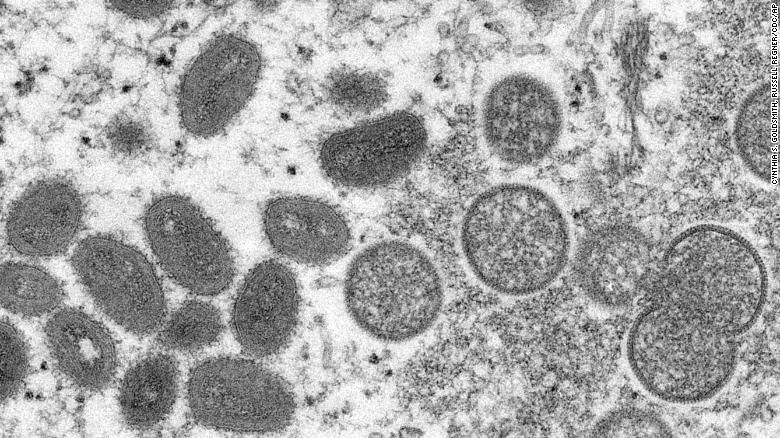
Mpox Updates — What You Need to Know
If you haven’t heard much about mpox (formerly known as the “Monkeypox” virus) recently, you’re not alone. A flurry of concern and worry had an uptick in early August of 2022 when the mpox outbreak was declared a public health emergency (PHE). However, the U.S. Department of Health and Human Services (HHS) decided not to renew this PHE declaration when it expired at the end of January 2023.
So, is mpox in the rearview mirror, once and for all? Here’s what you need to know about the implications of removing the emergency declaration, the impact of mpox over the past six months, and how the impact of vaccines has contributed to markedly reducing the spread of this disease.
Why Did the Presidential Administration Decide Not to Renew the PHE?
In a press release from December 2022, HHS Secretary Xavier Becerra acknowledged the quick response of the administration to the mpox outbreak when it was first identified. Their rapid action, which included offering free vaccines to all at-risk individuals, translated into a quick decline in cases after they peaked at the beginning of August 2022.
In the release, Secretary Becerra notes that while the cases are trending very favorably, they will “not take their foot off the gas” once the PHE ends and will continue offering free vaccines to vulnerable groups.
What Is the Current State of Mpox in the United States?
According to the most recently published statistics from the U.S. Centers for Disease Control and Prevention (CDC), daily case counts for mpox have been in the single digits since mid-December. This represents a precipitous decline from the peak of more than 600 cases in a single day at the beginning of August 2022. As of mid-February 2023, there had been more than 30,000 total cases reported in the United States and 32 total deaths. Globally, there had been more than 85,000 cases identified during the current outbreak.
What Impacted the Course of the Mpox Outbreak?
According to reporting on a CDC survey, the mpox outbreak was largely mitigated by behavioral changes, especially among members of the LGBTQ communities, given that the large majority of mpox cases occurred within communities of male-to-male sexual relations. Survey respondents were questioned about how they had modified their sexual contacts following the declaration of the PHE, and 50% noted that they had made changes.
Aside from behavioral change within the most heavily impacted communities, mpox vaccination campaigns were also highly effective at curbing the spread of the virus. As of mid-February 2023, nearly 1.2 million doses of the mpox vaccine had been administered in the United States.
The age group that had received the most vaccine doses was predominantly male and between 25 and 39 years of age. Information published by the CDC about the effectiveness of the JYNNEOS vaccine showed that for every one mpox illness among persons who had been fully vaccinated, there were ten mpox illnesses among those who were unvaccinated. Receiving both mpox vaccine doses conferred the most protection.
What to Do About mpox Exposure or Symptoms Now That the PHE Has Ended
If you’re concerned about a new rash or other symptoms that may be related to mpox, don’t delay seeking evaluation just because the PHE has not been renewed. If you’ve been in close contact with someone who has mpox, the CDC recommends that you take the following steps:
- Watch for mpox symptoms for 21 days following your exposure. These may include a rash that progresses from pimples or blisters to scabs before healing. You may or may not also have flu-like symptoms such as fever, chills, fatigue, muscle aches, headaches, or respiratory symptoms.
- Get an mpox vaccine. Even if you’ve been in close contact with someone with mpox, getting a vaccine can still help prevent you from getting the illness or lessen its impact. Get vaccinated as soon as possible.
- If you develop a rash or other symptoms, self-isolate and seek care. The CDC notes that before visiting a healthcare provider, you should cover the parts of your body that have a rash present to limit the spread of the potential viral particles.
To learn more about what to do if you’re feeling sick, make sure to visit this page from the CDC.
Research and materials for this article were compiled, written, and distributed on behalf of the National Public Health Information Coalition. The views and opinions expressed in this blog are those of the various authors and do not necessarily reflect the official policy or position of the National Public Health Information Coalition or its members.
Sources:
[1] Statement from HHS Secretary Becerra on mpox. https://www.hhs.gov/about/news/2022/12/02/statement-from-hhs-secretary-becerra-on-mpox.html
[2] U.S. Case Trends. https://www.cdc.gov/poxvirus/monkeypox/response/2022/mpx-trends.html
[3] 2022 Outbreak Cases & Data. https://www.cdc.gov/poxvirus/monkeypox/response/2022/index.html
[4] Vaccine Administration Data. https://www.cdc.gov/poxvirus/monkeypox/response/2022/vaccines_data.html
[5] If You’re a Close Contact. https://www.cdc.gov/poxvirus/monkeypox/prevention/close-contact.html
[6] If You Are Sick. https://www.cdc.gov/poxvirus/monkeypox/if-sick/index.html

